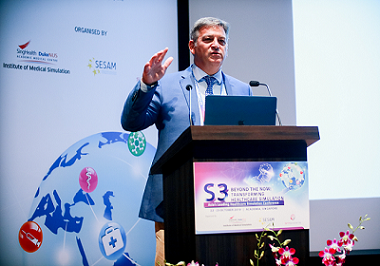The use of 3D printing in Simulation - High Acuity, Low Occurrence Emergency Simulators from DIY methods to 3D printing
Main Conference ProgrammeDate: 06 Nov 2025, Thu | Time: 1500 - 1630 | Track Type: Workshops
Format: Face-to-face | Venue: Level 2, PSL2, Academia
Speaker: Dr Ng Jet Yue Alexander and Assoc Prof Yen Ching-Chiuan
Dr Alexander from NUSmed CHS-DTI (Developing Technologies and Innovation), NUS CUTE and NUS Center for additive manufacturing will be presenting several high acuity, low occurrence models used in simulation training. The team will outline the development process, considerations, methods, challenges and limitations as well as simple tips and tricks in developing your own inhouse models.
A/Prof Yen will be sharing his experience in the development and design of medical simulation models. He will draw from his wealth of experience as a Dean’s Chair in the Division of Industrial Design, Deputy Directive of NUS Centre for Additive Manufacturing and Co-director of the NUS CUTE Center to outline the process of designing a medical simulation solution (VR and physical), demonstrate the challenges and possibilities of 3D printing and design.
Sharing session on the spectrum of possibilities of methods in developing and producing high acuity low occurrence (HALO) simulators using physical examples.
Learning objectives for the session include:
- Understanding the challenges of developing models for HALO
- Reviewing the educational and clinical importance of simulating HALO scenarios
- Identifying different types of simulators and modalities for HALO training (physical, VR, hybrid)
- Describing how DIY methods can be used to develop and simulate rate but critical events
- Understanding the requirements of forming a development team (Discuss roles of multidisciplinary collaboration, the importance of a designer)
- Review various design and prototyping methods for physical simulators
- Innovating with constraints and limitations- strategies to navigate barriers to entry
- Assessing effectiveness
- Value of knowledge sharing and collaboration
© 2025 SingHealth Group. All Rights Reserved.














